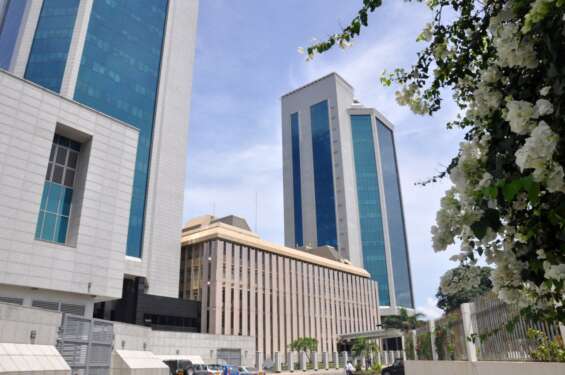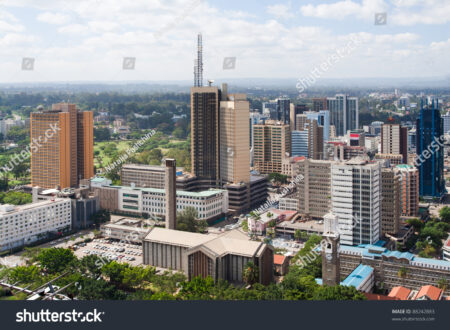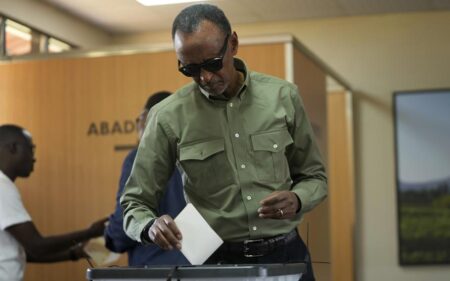Tanzania central bank last week produced a monthly economic review for December 2020, which depicted rather a range of issues, for instance on revenue performance being broadly in line with the 2020/2021 target.
Inflation
According to the recent report, the annual headline inflation slightly eased to 3.0 per cent in November 2020 from 3.1 per cent in the preceding month. The central bank argues that this was largely attributed to the slowdown in food inflation, stable exchange rate and moderate oil prices in the world market.
Hence, the inflation rate remains within the regional benchmarks and is below the country medium-term target of 5 per cent.
“On a month-to-month basis, headline inflation increased to 0.3 per cent in November 2020 compared to a rate of negative 0.1 per cent in the previous month and 0.5 per cent recorded in the corresponding period in 2019. Inflation is projected to remain in the range of 3.0 per cent to 5.0 per cent for the rest of 2020/21,” the report argues.
Fuel Prices
On fuel prices, things were a bit stable as domestic pump prices of petroleum products followed mirroring effects—depicting trends as observed in the world oil market prices, according to the central bank.
“The prices of petrol, diesel and kerosene declined by 13.5 per cent, 19.1 per cent, and 15.1 per cent respectively, in November 2020 compared with the corresponding month in 2019. On a month-to-month basis, domestic pump prices were slightly lower in November 2020 than in the previous month save for petrol,” BoT report noted.
READ:Central Bank depicts Zanzibar’s economic slowdown
Money Supply
On the money supply, the report comes forth with several interesting trends. In November 2020, Tanzania’s monetary policy stance prolonged its accommodative strength, which was driven hugely by the need to improve credit flows to the private sector to support the sustainable growth of the economy.
Broad money supply (M3) rose to around $627 million in the year ending November 2020, which was an annual growth rate of 5.2 per cent, versus a 5.9 per cent recorded in the year ending October 2020.
Interest rates
This sphere of the economy sustained rather mild setbacks, as the report showcased that interest rates on loans and deposits, as well as overall lending interest rates, had declined.
BoT report painted the scenario based on the end of November 2020, reflecting adequate liquidity levels in the market attributed to the sustained accommodative monetary policy by the bank of Tanzania.
“In November 2020, the overall lending interest rate and one-year lending interest rate
declined by 1.33 percentage points and 1.20 percentage points to an average of 16.61 per cent and 15.70 per cent, respectively from the levels recorded in November 2019,” the report depicted.
Financial Markets
In this lot, things were stable despite shakes indicated in the interest rates. According to the report, during the November 2020 money market sustained adequate liquidity levels which are unequivocally supported by accommodative monetary policy condition and matured treasury bills.
“The shilling remained stable against major global trading currencies, strengthened by the gradual increase in the supply of foreign currency from cash crop exports, coupled with sustained low inflation,” the report indicated.
Revenue
Tanzania managed to prolong its revenue performance spree. According to the report, revenue performance continued to be aligned with the target for 2020/2021. During October 2020, revenue collection amounted to around $702 million of which nearly $658 million was gathered by the central government and the balance was from the local government.
While, tax revenue reached nearly $529 million and non-tax revenue marked around $121 million, which is higher than the target of more than $100 million and around $90 million gathered in October 2019. However, the report argued that performance was attributed to the increase in dividend payment.
External Debt
Tanzania’s debt to multilateral institutions has also risen, in both sectors-private and public sector, amounting to nearly $ 23,813.6 million at the end of November 2020—this scenario displays an increment of $145.5 million and $1.4 billion from the preceding month and November 2019.
“The increase during the month was mainly on account of depreciation of the US dollar against other currencies in which the debt is denominated, particularly the US dollar vis-à-vis Special Drawing Rights (SDR). The Central government external debt continued to account for the largest share of total external debt, at 77.3 per cent,” the report argued.
Two sectors have commanded a bigger share of the disbursed outstanding external debt at 27.2 per cent—transport and telecommunications activities, social welfare and educations follow, according to BoT.
Exports
This fruitful sector of the economy saw a mix of performances as some traditional exports did well compared to others. Cloves, nuts and cotton exports increased compared to tea and sisal—which declined due to the low price and volume of production.
“The value of exports of goods and services amounted to USD 8,839.9 million in the year ending
November 2020, lower than $ 9,460.8 million in the year ended November 2019, explained by the decline in services receipts. On monthly basis, the value of exports of goods and services was $836.5 million in November 2020 compared with $857.2 million in November 2019.
The value of traditional exports increased to $ 826.1 million in the year ending November 2020 from $ 745.1 million recorded in the corresponding period in 2019, owing to an increase in export values of cashew nuts, cloves and cotton” the report noted.
Imports
According to the report, imports bill for goods and services declined to around $8.9 billion in the year ending November 2020 from $ 10.5 billion in the corresponding period in 2019, which is largely by a decrease in imports of capital and intermediate goods.
The report attributed the decrease to transport equipment and oil. “The value of oil imports, which accounted for 17.1 per cent of goods import declined by 28.8 per cent to $1.3 billion owing to a decrease in both price and volume,” the report noted.
Tanzania economy is projected to grow at a pace of 5.5 per cent, slightly off the 7 per cent anticipated earlier, due to various reasons including COVID-19 shocks.
READ:Bank of Tanzania report paints a gloomy future for Zanzibar’s economy











